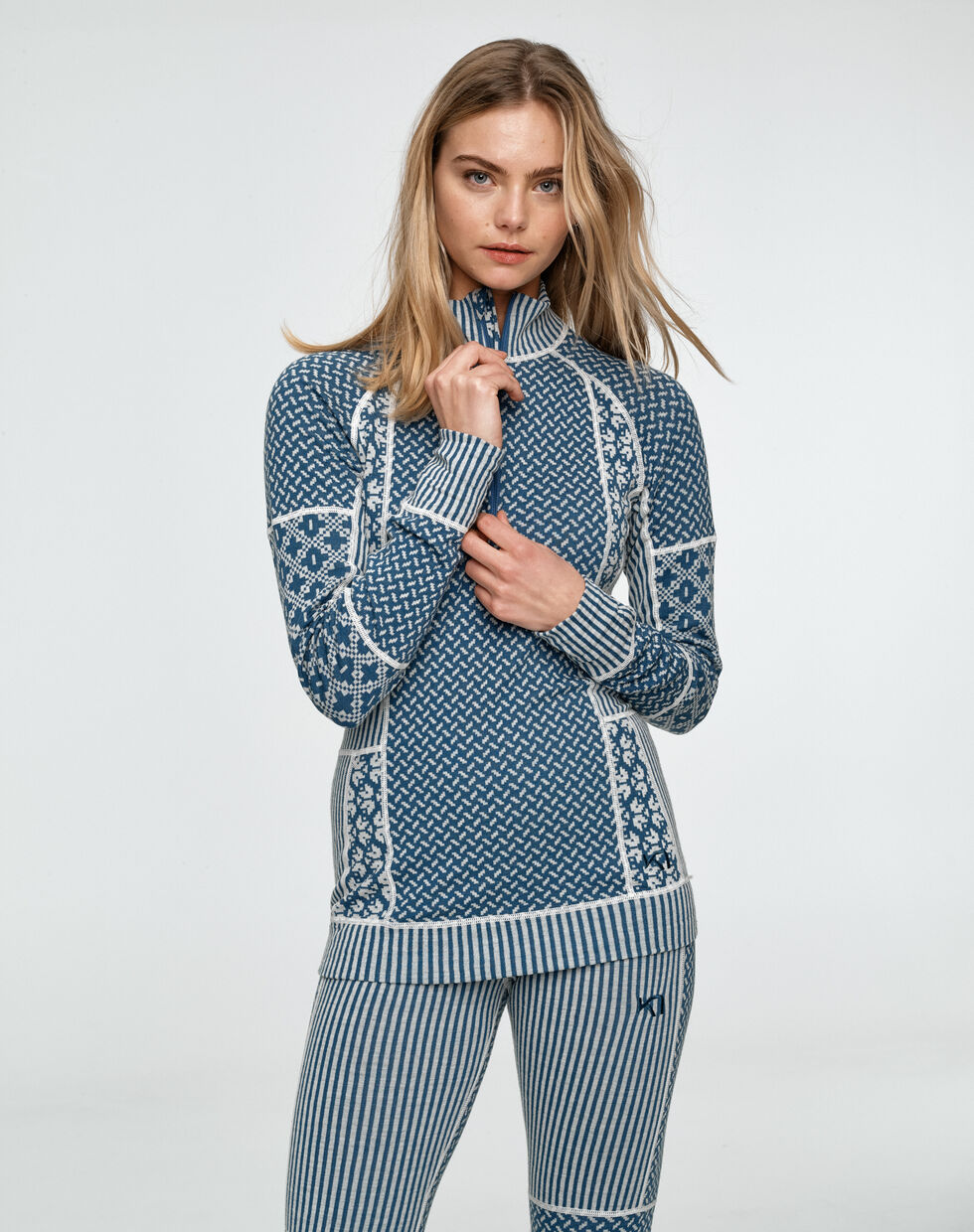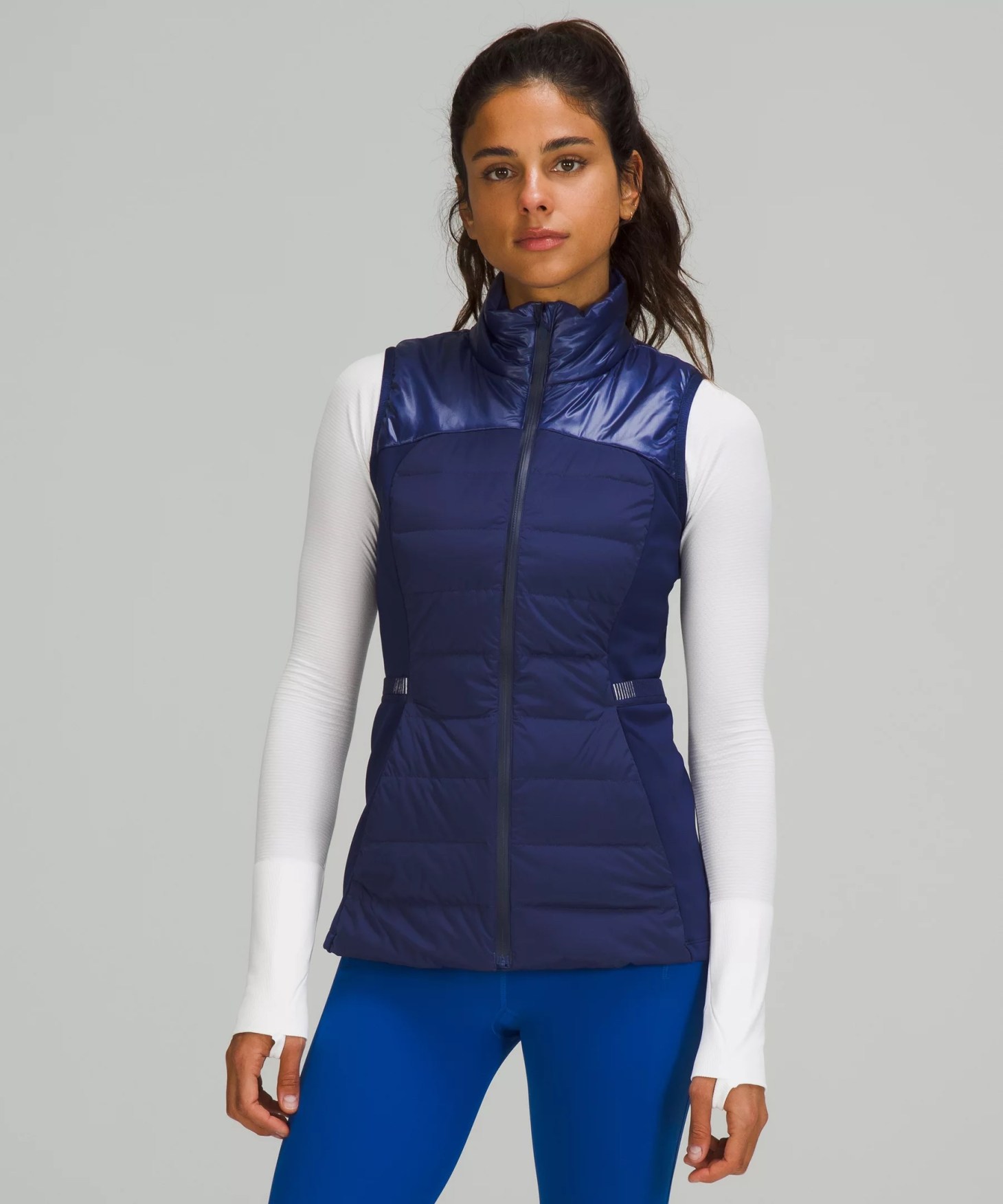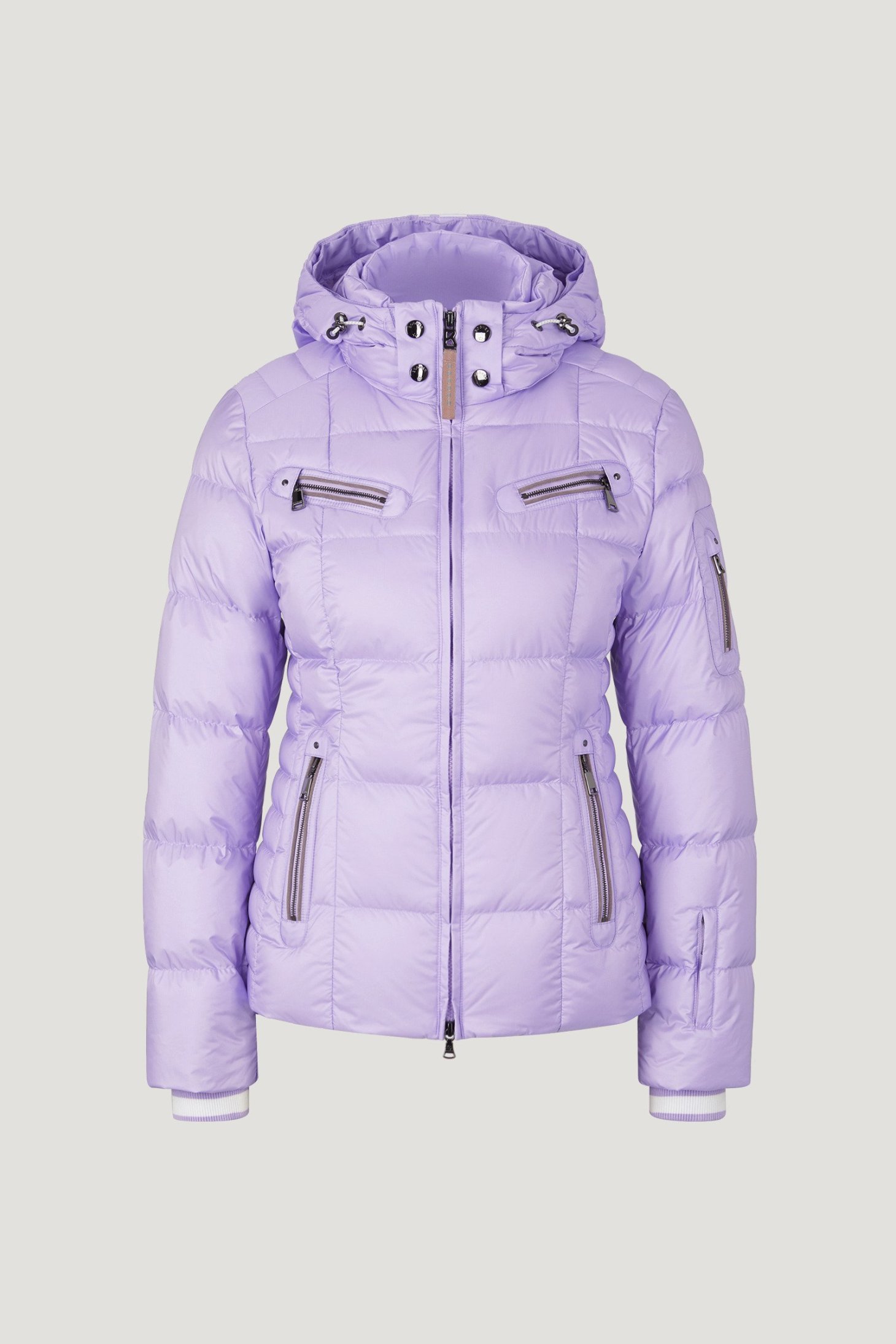Right Now Is the Best Time To Shop for Ski Apparel—Here’s What To Get, According to 2 Olympic Skiers
In packing for a recent ski trip (my first in... a lot of years), I was blown away by the sheer volume of stuff you need to properly prepare for the piste. My list of "things to buy" grew by the day, and I realized that strutting onto the slopes in a cute jacket and waterproof leggings simply wasn't going to cut it.
As I learned, the key to putting together a proper ski outfit is finding pieces that you can move in. Plus, they need to keep you warm enough so that you're not miserable on the chairlift, but not so warm that you're spending the day sweaty and uncomfortable. Looking cute, of course, is a bonus (though for me, it was a non-negotiable). It's a tall order, and for the uninitiated (read: me), it can be hard to figure out WTF to buy.
"Conditions on the mountain can change in a blink of an eye, and it’s important to come ready for sun or slush," says Kari Traa, a former Olympic freestyle skier and founder of her own eponymous ski-wear brand. "You should start with base layer, the layer you wear next to your skin. Next up is the mid layer, whose goal is to keep you warm through insulation and protect you from the cold. The final items in your layering system for skiing are your outer layers or shells, which are most important in keeping you protected from the elements."
With that in mind, we rounded up our favorite picks in each of these three categories. And the best part? SO many of them are currently on sale, which means it's the perfect time to stock up for next ski season.
{{post.sponsorText}}
Base layers
Base layers serve two main purposes: Keeping you warm, and siphoning off all of the sweat you produce while you ski before it freezes onto your body. With that in mind, "for base layers, you want to look for breathability and a tighter fit," says Kylie McKinnon, former Olympic freestyle skier and co-founder of Halfdays, a sustainable outerwear brand. "While your instinct might be to put as many layers on as possible, it’s important to consider that your body will work up a sweat as you move down the mountain and to look for layers that allow your body to more naturally regulate temperature."
On colder days, Traa recommends choosing a thermal fabric, but when temps climb you can choose a lighter-weight base layer. "Merino wool is your best friend for its technical features like odor-management and temperature regulation," she says.
Shop base layers

Originally $108, now $64
This top is next-level warm, but also has A+ sweat-wicking properties so that you won’t be stuck shivering in a pool of your own frozen sweat on the chairlift. Plus, it’s antibacterial, which means you won’t have to worry about any post-ski day stank when it comes time for après. There’s a set of matching pants (that have all of the same benefits and are also on sale for $64) and the styles come in a slew of different colors so that you can rock a different base layer look every day.

Originally $100, now $60
An editor favorite, this one-piece base layer is a no-brainer way to stay warm. It’s lined with fleece and zips all the way up so that your neck is never left exposed, and will look oh-so-cute when you slip off your ski jacket for post-slopes hot toddies.

Originally $120, now $84
I tested out this base layer on my ski trip, and was impressed that it held up just as well on a 20-degree day as it did on a 50-degree one. The top and pants (both on sale for $84) are cute, comfortable, and breathable (they’re made from sweat-wicking merino wool), which means they check all of the pros boxes.
Mid layers
This secondary layer is most important on particularly cold days, when your base and outer layers simply won't cut it on their own. Typically, they're worn on top, since your upper body tends to get colder than your legs. "This layer is the most adjustable, so you can add or take away as you see fit depending on the weather," says Traa.
As far as what to choose, "I always look for something that has a slightly looser fit than my base layer and I like a quarter zip because it’s easier to layer," says McKinnon. I also like to stay away from anything with a hood, but that is definitely a personal preference! As far as fabrics go, fleece and wool are good options as they will add that extra element of warmth but are usually not too bulky."
You can also opt for a puffy vest, a sweater, or a jacket—really whatever will layer easily under your outerwear keep you warm and comfortable.
Shop mid layers

Originally $140, Now $98
This top-rated half-zip is made from stretchy, sweat-wicking merino wool, and is a good layering option when temps dip below freezing. That said, it’s also got UPF protection, so it’s perfect to wear on its own for all those unseasonably warm spring ski days.

Originally $148, now $119
Considering this vest is designed for running, you know it’s easy to move in. It’s made with the brand’s patented PrimaLoft® insulation, and padded with down feathers to lock in heat around your chest and back. It comes in two colors (black and navy) and works great as a non-suffocating mid-layer under a shell.

Originally $139, now $104
I personally love a mid-layer that you can customize depending on the weather, and this one allows you to do exactly that. Designed with cold-weather training in mind, it’s made from chafe-free nylon and spandex, and you can wear it zipped or unzipped to account for any temperatures you might encounter.
Outer layers
The outer layers—which is what people will actually see on the slopes and in your Instagram photos—are where you can really let your personal style shine through. For what it's worth, though? My recent experience taught me that "comfort" should take precedence over "cuteness" 100 percent of the time.
"The ski jackets and pants are usually water-resistant and insulated to shield you from moisture such as rain or snow and wind chill as you’re skiing or waiting for the next lift," says Traa. " Try to find an outer layer that hit all the key points offering lightweight insulation for warmth, breathability, and water-repellency where you need it most."
Before you invest, you'll want to make sure you can really move in your outerwear (which means shopping for it in person or ordering from a website with a solid return policy). "My advice for testing out jackets and pants is to make sure that you can really move around in them before you make your way to the mountain," says McKinnon. "Try to do things that mimic the motion of skiing and snowboarding like lifting your arms up, lunging, squatting or even sitting in a chair (you spend a lot of time sitting on a chairlift). If something feels too tight at home, it will most likely not be very comfortable to wear for hours on the mountain and nothing is worse than being uncomfortable."
Shop ski jackets

Originally $350, now $245
This jacket has the warmth of a puffer with the flexibility of a shell, which means it’s toasty and easy to move in. It’s got a padded hood and upper section that holds in heat, a snow guard, and a set of hand protectors that keep snow from sneaking into that awkward space between your gloves and your jacket.

Though Halfdays’ Lawrence Jacket isn’t on sale, it’s worth paying full price for. It’s designed for extra-cold days (it can withstand temperatures well below freezing), but is breathable enough that you won’t overheat. Plus, it’s made from recycled materials that you’ll feel good about investing in. It comes in a variety of bright colors—like this happy yellow and a poppy red—which will make you easy to spot on the mountain.

Originally $1500, now $1125
A full lilac look is a surefire way to get spotted on the mountain. This breathable puffer has a snow guard and a double zip, which means you’ll be properly protected in any conditions (even without a mid layer). It’s water repellant, has a whole lot of pockets (six, to be exact), and comes equipped with a detachable hood.
Want to be the first to hear about the latest (and greatest) SHOP product drops, custom collections, discounts, and more? Sign up to have the intel delivered straight to your inbox.
Loading More Posts...